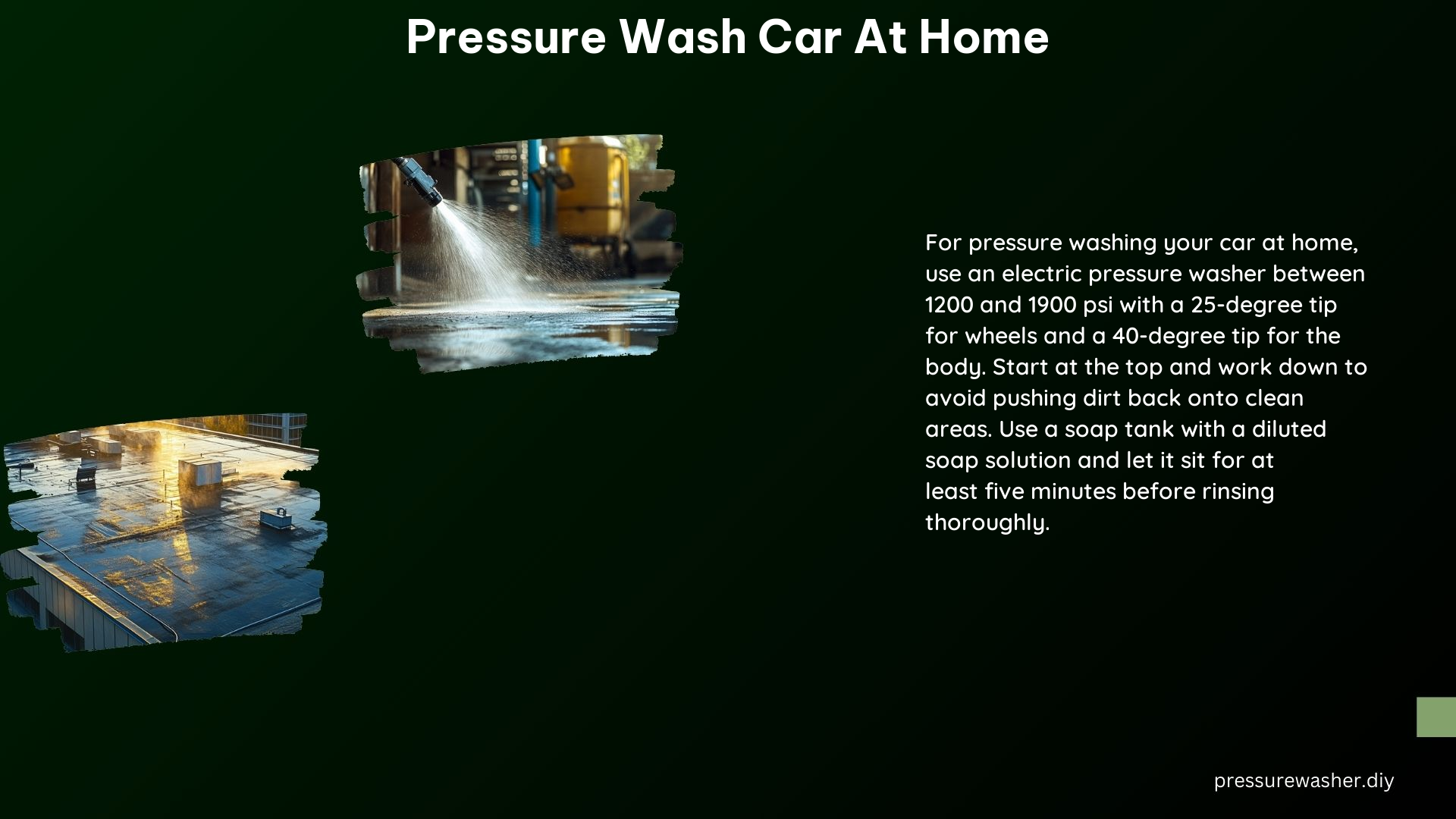Pressure washing your car at home can be an efficient and cost-effective way to keep your vehicle looking its best. However, it’s essential to follow the right techniques and safety precautions to avoid damaging your car’s paint or other components. This comprehensive guide will walk you through the essential steps and considerations for pressure washing your car at home effectively and safely.
Ideal Pressure and Water Flow Settings
The key to successful pressure washing is finding the right balance between pressure and water flow. Using the wrong settings can lead to paint damage, water intrusion, or ineffective cleaning.
Pressure Settings
When it comes to pressure, the sweet spot for pressure washing a car is between 1200 and 1900 PSI (Pounds per Square Inch). This range is suitable for most cars and helps to avoid damaging the paint. It’s important to note that higher pressure settings may be necessary for heavily soiled or caked-on dirt, but should be used with caution.
Water Flow
Maintaining a consistent water flow is crucial for effective pressure washing. The water flow rate should be adjusted according to the pressure washer’s specifications and the car’s surface. A steady water flow helps to maintain the desired pressure and ensures thorough cleaning.
Essential Tips and Nozzles

The type of nozzle you use and the technique you employ can make a significant difference in the quality of your pressure washing results.
Nozzle Selection
- Use a 25-degree tip for cleaning wheels and caked-on mud. This narrower angle provides more concentrated pressure for tackling stubborn dirt.
- Use a 40-degree tip for all other surfaces of the car. The wider fan pattern helps to cover more area and reduces the risk of paint damage.
Pressure Washing Technique
- Start at the top of the car and work your way down. This helps to avoid pushing dirt back onto the clean areas.
- Use a wide fan tip to cover more surface area and reduce the risk of damaging the paint.
- Avoid spraying directly into the front grille, as this can potentially damage the radiator.
- Apply soap using a soap tank or by hand with a rag or sponge, following the recommended water-to-soap ratio.
Regulating Pressure and Water Flow
Adjusting the pressure and water flow settings is crucial for effective and safe pressure washing.
Pressure Regulation
Adjust the pressure setting based on the car’s surface and the type of dirt. Lower pressures (around 1200 PSI) are suitable for most surfaces, while higher pressures (up to 1900 PSI) may be needed for caked-on mud or heavily soiled areas.
Water Flow Regulation
Ensure a consistent water flow by maintaining the recommended water pressure and adjusting the nozzle tip accordingly. This helps to maintain the desired pressure and ensures thorough cleaning.
Additional Safety Precautions
Pressure washing a car requires attention to detail and safety measures to prevent damage to the vehicle or personal injury.
Surface Preparation
Before pressure washing, remove any loose debris, such as leaves, twigs, or gravel, to prevent scratching the paint.
Soap Application
Apply soap according to the manufacturer’s instructions and allow it to sit for at least five minutes before rinsing. This helps to break down and lift dirt and grime.
Rinsing
Rinse the car thoroughly with clean water to remove all soap residue. Failure to do so can lead to water spots or other surface blemishes.
Drying
Dry the car with a soft cloth or chamois to prevent water spots from forming as the car air-dries.
Technical Specifications
When it comes to pressure washers for car washing, there are several models that are well-suited for the task. Here are some popular options:
| Model | Pressure (PSI) |
|---|---|
| SunJoe SPX3000 | 2030 |
| Karcher K1700 | 1700 |
| BlackMax BM80721 | 1700 |
| Ryobi 1600 or 1700 | 1600 or 1700 |
These pressure washers fall within the recommended pressure range of 1200 to 1900 PSI, making them suitable for pressure washing cars at home.
Reference Links
- Pressure Washing a Car: Tips and Techniques
- Pressure Wash vs. Hand Wash: Which is Better for Your Car?
- How to Clean Your Car with a Pressure Washer
- Pressure Washing a Car: Dos and Don’ts
- Pressure Washer Mainly for Washing Cars at Home
By following the guidelines and recommendations outlined in this comprehensive guide, you can effectively and safely pressure wash your car at home, ensuring a sparkling clean finish without risking damage to your vehicle.
